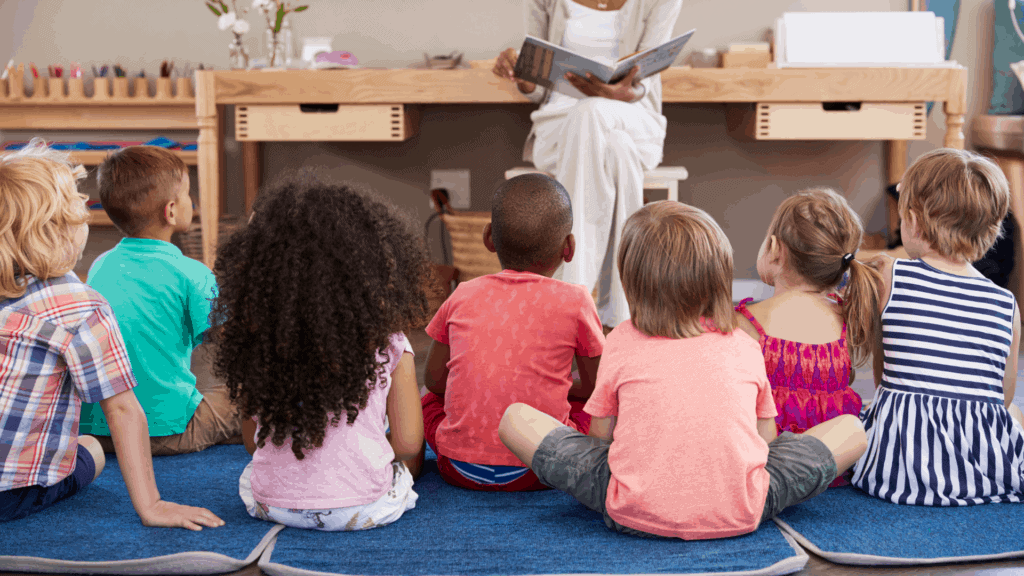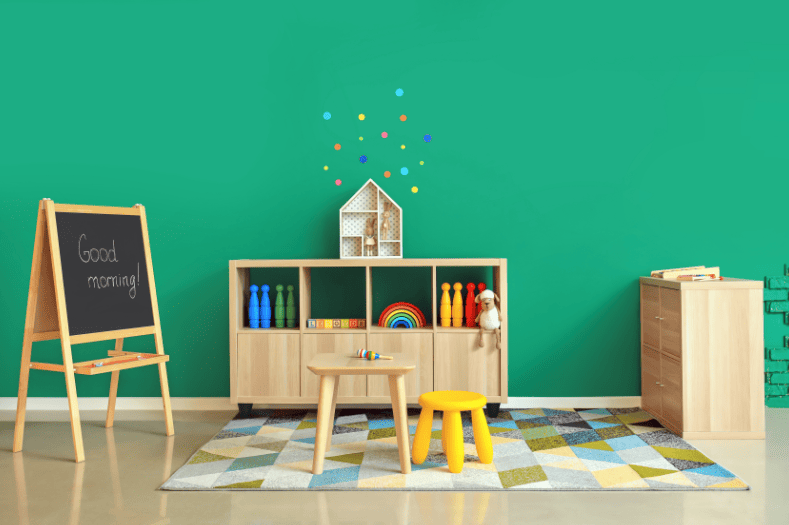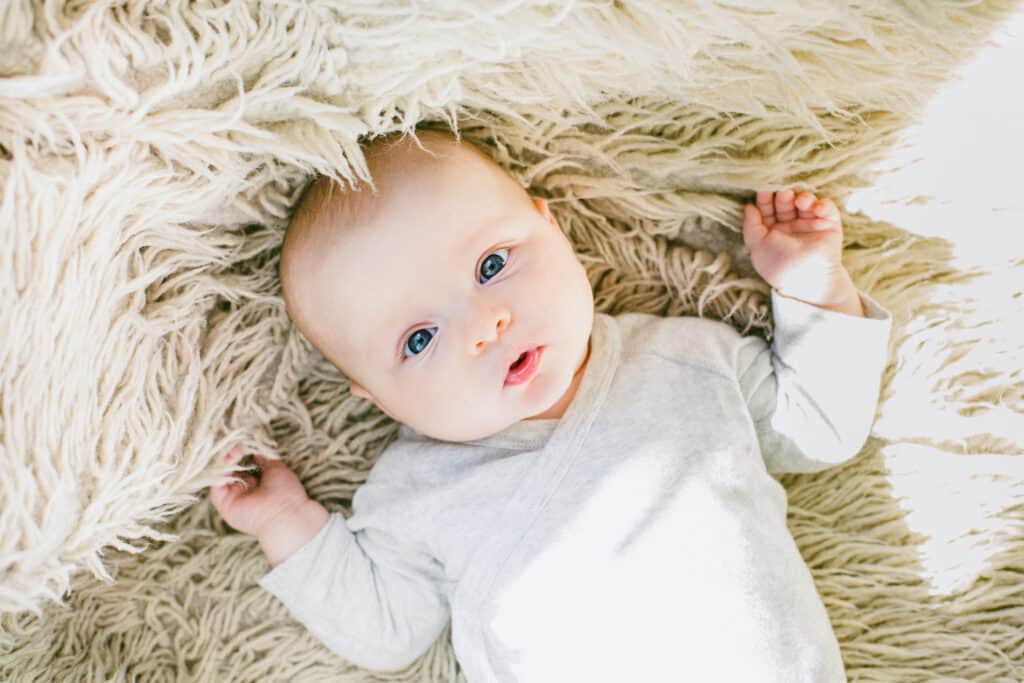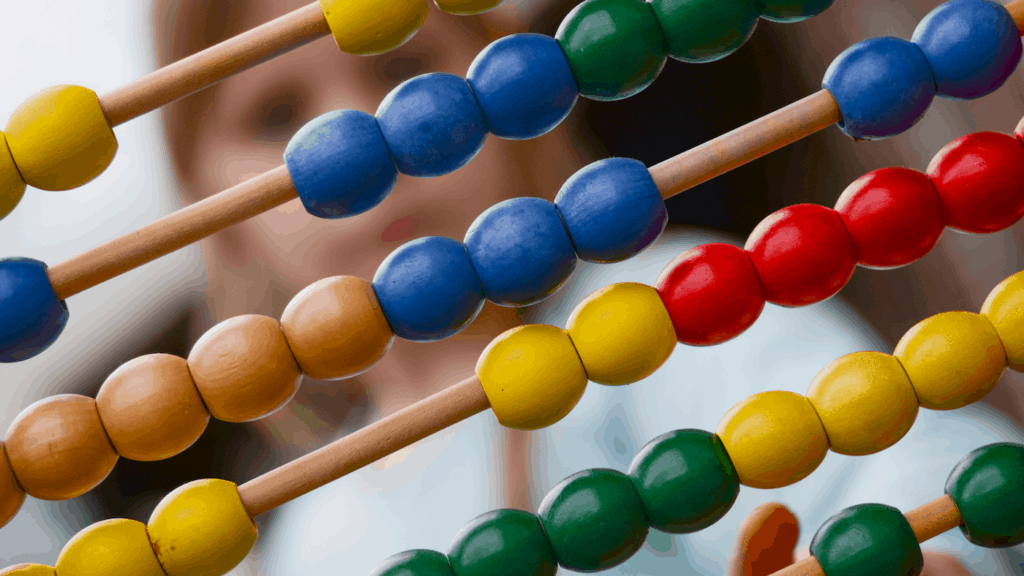Anyone who’s ever been around a young child for more than a few minutes has likely seen them using whatever is in their vicinity to build or stack. Whether it’s pots and pans or cardboard boxes, kids seem to be fascinated with fitting objects inside other objects. This type of play can be referred to as nesting play.
There are
What makes nesting boxes such an important toy in any
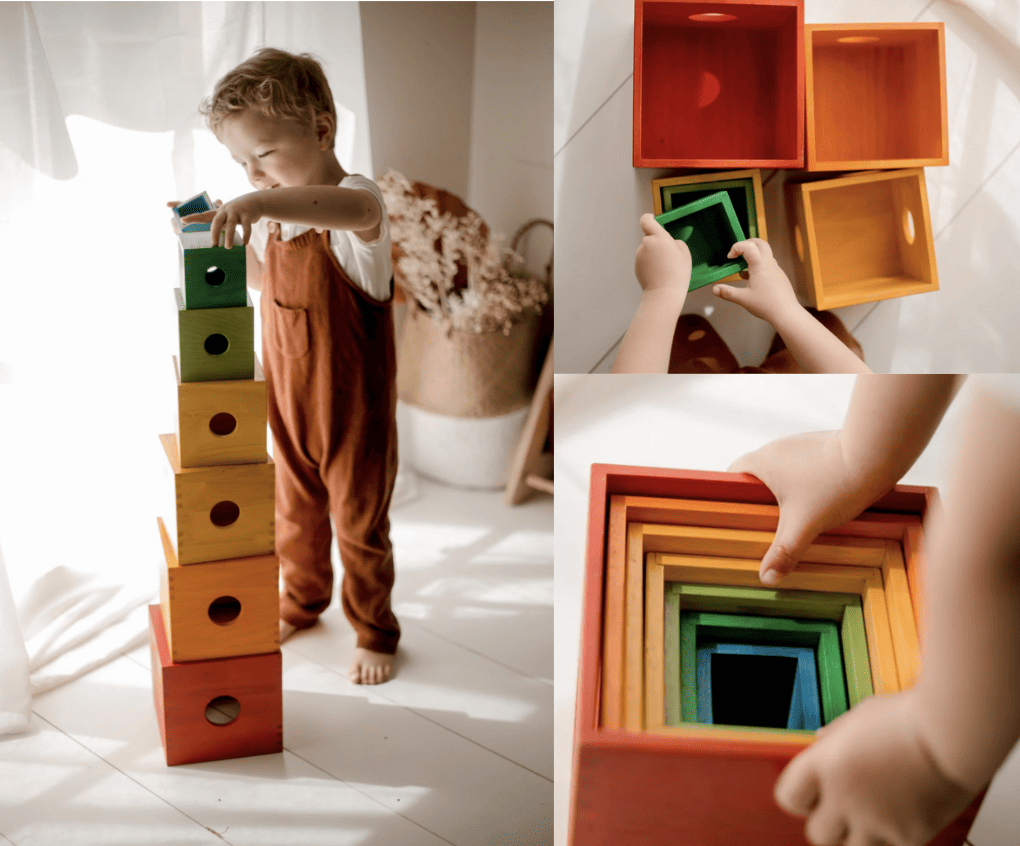
Montessori for Today picks out furniture, educational tools, toys and lifestyle items that we think are the best and most exciting, based on independent research and careful consideration. On some occasions we earn revenue (at no additional cost to you) if you click the links and buy the products. But this doesn’t affect what we choose to highlight and we will never let it bias our coverage.
Montessori Nesting Boxes and Cosmic Education
Though nesting boxes might seem like a simple children’s game, they actually directly connect to one of the most powerful concepts behind the
So, what is Cosmic Education and how on earth does it connect to a bunch of wooden boxes?
Cosmic Education is one of the foundational beliefs of the
Within the
Sounds complicated? Let’s look at this concept through a different lens. How about we use…cosmic nesting boxes!
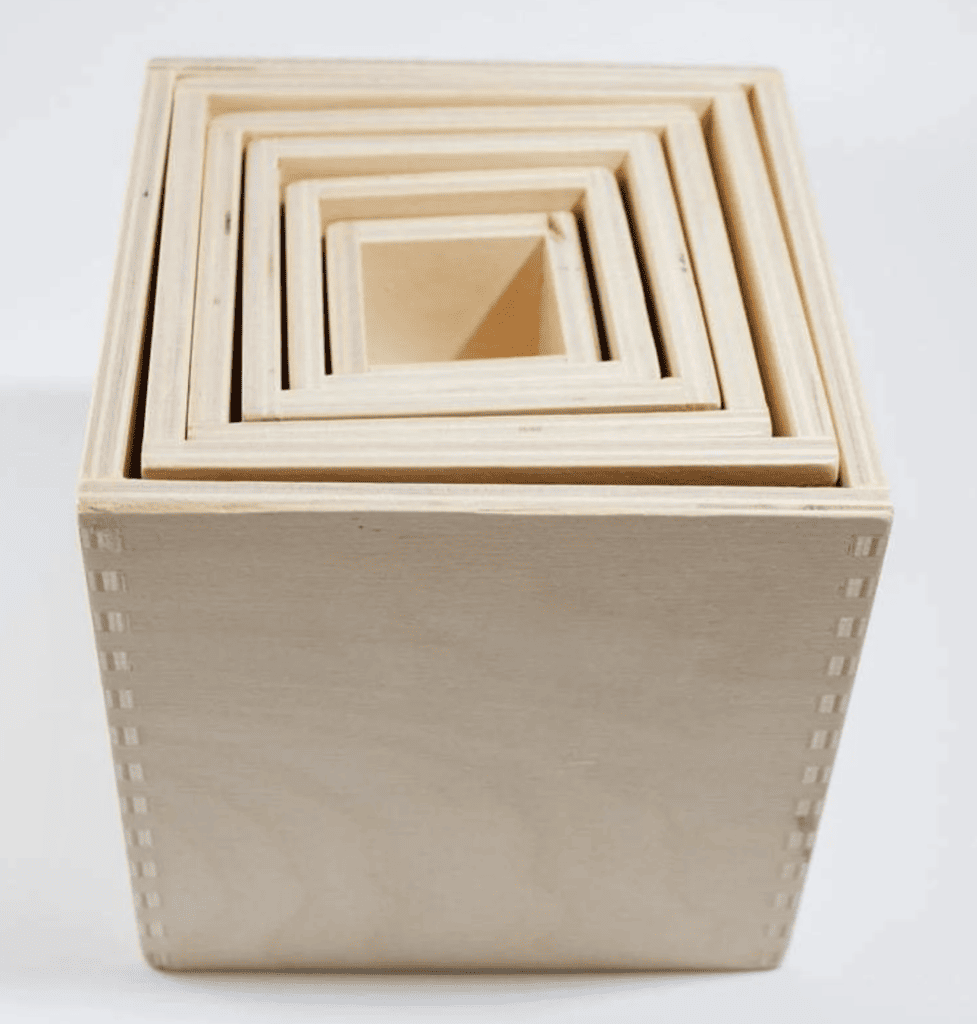
So, let’s say you have a big wooden box, maybe something that looks like this or the picture above. This box represents the Milky Way Galaxy. We can think of this box as our “whole” because we won’t be adding anything onto this box or exploring anything outside of it. Instead, we’re exploring what it contains.
We look inside the box and guess what? There’s another box fitted neatly inside. This smaller box represents our solar system and, when we take it out of the Milky Way Galaxy Box, we can see how it’s both a part of the Milky Way, while also having capacity to contain its own parts.
And so we can continue – pulling the Earth out of the solar system, then North America out of the Earth, then the United States of America, and so on and so forth until you get to, well…you! You can even go further, pulling out smaller and smaller boxes representing parts of your body, your cells, your atoms!
When we look at these boxes (which you can buy or make yourself), we can see how every part of our known universe is contained within that universe, how nothing is separate, how everything is connected! This is a powerful lesson that provides a fundamental understanding of more complex ideas like systems, empathy, natural processes, community, interdependence, cause and effect, and many more. And this is exactly what children can learn when they play with cosmic nesting boxes.

This is also a great example of why Maria
Cosmic nesting boxes are one very important type of nesting toy in
Other Nesting Toys in Montesori
While cosmic nesting boxes address a specific type of learning, there are plenty of other nesting toys that can be perfect for your child’s
To start, there are lots of different types of nesting boxes for children. There are wooden nesting boxes, cardboard nesting boxes, colorful nesting boxes; nesting boxes with animals, numbers, letters, jobs, buildings on them! Any nesting box you can imagine probably exists out there somewhere.
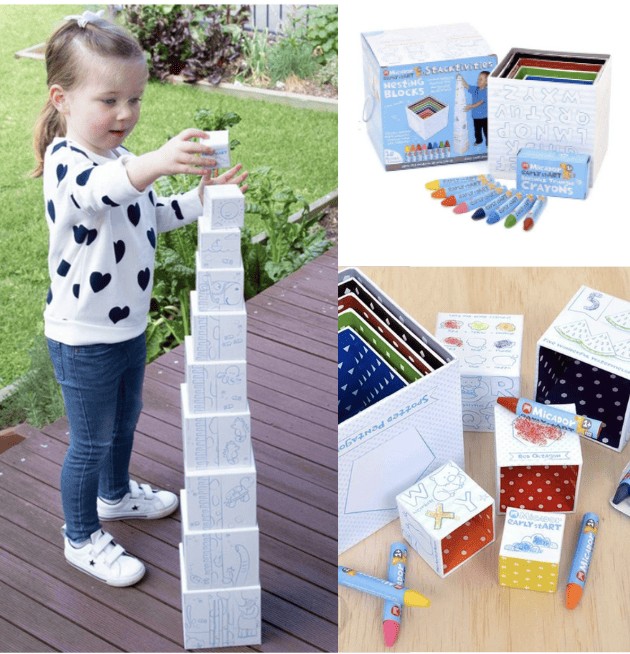
And even if you can’t find the exact type of nesting box you’re looking for, they couldn’t be easier to make. There are quite a few tutorials online, but the process is simple enough that a tutorial might not even be necessary. All you need are several boxes of different sizes that fit neatly together. You could use cardboard boxes, make them out of wood, or even create origami nesting boxes. This is an activity you could even do with your child or a challenge you could set for them to try and figure out themselves.
Beyond nesting boxes, there are countless other nesting toys that can be used in

There are also the incredibly popular plastic or silicone stacking cups, which any of you with infants or toddlers are likely already aware of. While these would not be a preferred
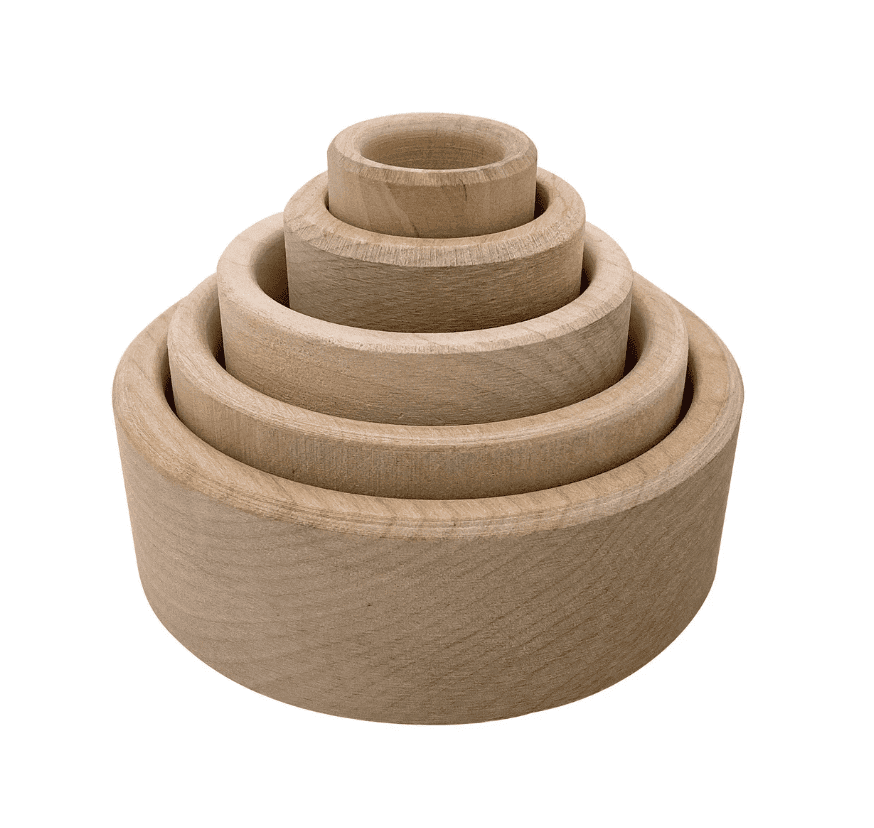
Benefits of Nesting Boxes
So, what are the benefits of nesting toys?
Nesting toys are wonderful tools for developing dexterity, hand-eye coordination, and fine motor skills, particularly for younger children. Larger toys can even promote gross motor skills, and stacking the boxes can help children learn about balance and force. To determine size in order to nest the boxes together, children need to engage their visual perception and spatial reasoning.
As children begin exploring language, nesting toys can help them develop their use of comparison terms like “bigger” and “smaller” and their understanding of size and shape. Counting, sequencing, and sorting skills will also likely come into play, as children ponder questions of how many? and what kind? As with many

As is the case with the cosmic nesting boxes, nesting toys can also be a fantastic visual and tactile tool for describing complex ideas, particularly ideas about part-to-whole relationships. This can be applied to many different concepts – from the classification of living things to types of shapes to the structure of a home. In particular, using the same nesting toy to explain different concepts can be a great way to help children learn about natural patterns and abstract reasoning.
Which, of course, brings it all back to Cosmic Education, the cornerstone of the Montessori method.
“To have a vision of the cosmic plan, in which every form of life depends on directed movements which have effects beyond their conscious aim, is to understand the child’s work and be able to guide it better.”
The Absorbent Mind by MariaMontessori



